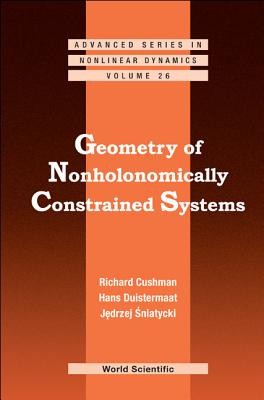
- We will send in 10–14 business days.
- Author: Richard H Cushman
- Publisher: World Scientific Publishing Company
- Year: 2010
- Pages: 404
- ISBN-10: 9814289485
- ISBN-13: 9789814289481
- Format: 15.5 x 22.9 x 2.3 cm, hardcover
- Language: English
- SAVE -10% with code: EXTRA
Geometry of Nonholonomically Constrained Systems (e-book) (used book) | bookbook.eu
Reviews
Description
This book gives a modern differential geometric treatment of linearly nonholonomically constrained systems. It discusses in detail what is meant by symmetry of such a system and gives a general theory of how to reduce such a symmetry using the concept of a differential space and the almost Poisson bracket structure of its algebra of smooth functions. The above theory is applied to the concrete example of Carathéodory's sleigh and the convex rolling rigid body. The qualitative behavior of the motion of the rolling disk is treated exhaustively and in detail. In particular, it classifies all motions of the disk, including those where the disk falls flat and those where it nearly falls flat.The geometric techniques described in this book for symmetry reduction have not appeared in any book before. Nor has the detailed description of the motion of the rolling disk. In this respect, the authors are trail-blazers in their respective fields.
EXTRA 10 % discount with code: EXTRA
The promotion ends in 20d.17:04:56
The discount code is valid when purchasing from 10 €. Discounts do not stack.
- Author: Richard H Cushman
- Publisher: World Scientific Publishing Company
- Year: 2010
- Pages: 404
- ISBN-10: 9814289485
- ISBN-13: 9789814289481
- Format: 15.5 x 22.9 x 2.3 cm, hardcover
- Language: English English
This book gives a modern differential geometric treatment of linearly nonholonomically constrained systems. It discusses in detail what is meant by symmetry of such a system and gives a general theory of how to reduce such a symmetry using the concept of a differential space and the almost Poisson bracket structure of its algebra of smooth functions. The above theory is applied to the concrete example of Carathéodory's sleigh and the convex rolling rigid body. The qualitative behavior of the motion of the rolling disk is treated exhaustively and in detail. In particular, it classifies all motions of the disk, including those where the disk falls flat and those where it nearly falls flat.The geometric techniques described in this book for symmetry reduction have not appeared in any book before. Nor has the detailed description of the motion of the rolling disk. In this respect, the authors are trail-blazers in their respective fields.


Reviews